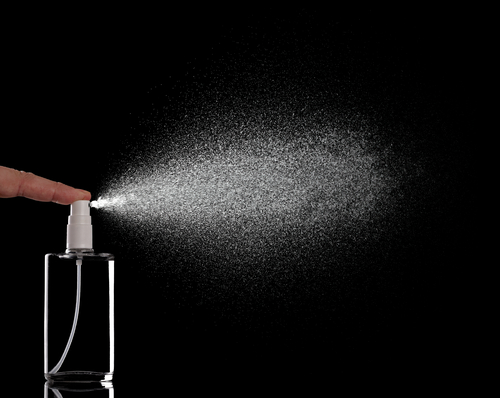The Dangers of Synthetic Fragrances
Posted by Katie Zapotoczny on 8th Sep 2017
Synthetic fragrances can be found in products ranging from personal care items, perfumes, and colognes to household cleaners and fabric softeners. While these products may smell good, the man-made chemical mixtures that go into fragrances can have many toxic side effects.
Fragrance: It's Not Just One Ingredient!
So just what does that word "fragrance" on your bottle of lotion (or shampoo or soap or deodorant...) mean? This generic term can actually represent over 3,000 synthetic ingredients, about 95% of which are derived from petroleum. Many of these ingredients are known or suspected carcinogens, allergens, respiratory irritants, endocrine disruptors, neurotoxins, and/or environmental toxins.
But because the unique scents of products are protected as "trade secrets," manufacturers are not compelled to list the individual ingredients that go into "fragrance" on product labels or in ingredient lists- even when a product has been reported to cause human health issues.
As consumers, we do have access to the International Fragrance Association's Transparency List, which names the ingredients that the fragrance industry uses, but we have no way of knowing which specific ingredients are added to any given product. To give an example, research led by the Environmental Working Group and the Campaign for Safe Cosmetics found an average of 14 chemicals in 17 fragrance products, but none of those chemicals was listed on the labels. That's a lot of ingredients to leave off of an ingredient list.
Health Risks Associated with Artificial Fragrances
In 2016 study that surveyed over 5,000,000 people in the U.S., over 34 percent of participants "reported one or more one or more types of adverse health effects from exposure to one or more types of fragranced products." Common symptoms included respiratory problems, migraine headaches, skin problems, neurological and cognitive problems, and asthma attacks.
In addition to these self-reported health effects, other research has found associations between artificial fragrances and several other serious health problems.
Cancer
Breast Cancer Prevention Partners recommends avoiding artificial fragrances because they may contain phthalates or styrene. Phthalates have been linked to early puberty in girls, a risk factor for breast cancer later in life. They have also been found to act like estrogen in culture systems. Higher blood levels of estrogen may also increase the risk of developing breast cancer.
Styrene is found in cigarette smoke and car exhaust, so you wouldn't think that it would be used in artificial fragrances too! However, it can also be found in cosmetic sprays and liquids and in some cleaning products. Styrene is believed to be a human carcinogen and hormone disruptor and may be toxic to red blood cells, the liver, and the central nervous system (source).
Another fragrance ingredient, butylated hydroxyanisole (BHA) has been linked to endocrine disruption and is listed as a possible human carcinogen on California's Proposition 65.
Allergic Reactions and Asthma
Worldwide, fragrances are one of the top 5 substances that trigger allergies. Common reactions to fragrances include headaches and migraines, difficulty breathing, sinus irritation, and contact dermatitis (an allergic reaction that occurs in the skin).
Persons with asthma may be even more sensitive to artificial fragrances and may experience various health symptoms when exposed to perfumes, colognes, or other scented products.
How We Scent Verefina Products
At Verefina, we take the dangers of artificial fragrances very seriously. Therefore, we never scent our products with anything but 100% natural ingredients, including therapeutic grade essential oils, natural flavors, and botanicals. In addition to being non-toxic, these ingredients also provide health-promoting benefits.
Essential Oils
Essential oils are derived from various parts of plants, such as the peel of a fruit, the flowers, leaves, or stems; they carry the distinctive scent or "essence" of the plant from which they are derived. Because essential oils are extremely concentrated, we use just enough of them in our products to infuse them with aromatherapeutic benefits and to give them a pleasant scent.
Natural Flavors
We use natural flavors in some of our products. These flavors are sourced from 100% fruit, vegetable, or plant matter and are extracted through non-chemical processes, such as water extraction, alcohol extraction, vegetable oil extraction, and steam distillation.
Our natural flavors are free of synthetic ingredients, including phthalates, parabens, sulfates, glycols, petrochemicals, and chemical solvents. In addition, they do not contain any artificial preservatives, stabilizers, or artificial colors.
Our lip butters and balms also contain stevia leaf extract, a natural alternative to sugar.
Botanicals
Botanicals include dried plants, such as lavender flowers, mint leaves, and poppy seeds. We add dried botanicals to our Sugar Scrubs to enhance the aroma of these products.
Unscented Products
While our products are scented with only natural ingredients, we understand that some of our customers do not like, or cannot tolerate, scented products at all, whether they are natural or not. For this reason, many of our products, including our lotions, some of our soaps, and products for babies are available in an unscented version. Unlike many "unscented" products that contain additional synthetic chemicals to mask the product's actual scent, these Verefina items are unscented because we simply do not add any fragrance ingredients to them. This is an important difference between unscented Verefina products and many other "unscented" or "fragrance-free" products; "fragrance-masking" chemicals can actually cause reactions in customers who thought they were buying products that are truly free of scents or fragrances.
Some Final Thoughts on Synthetic Fragrances
There are many health risks associated with synthetic fragrances- some more serious than others. To avoid artificial fragrances, read labels carefully, and steer clear of products containing "fragrance," "perfume," or "parfum." And be aware that fragrance-free products may actually contain fragrance-masking chemicals. If you're unsure about whether or not this is true of a product you use, contact the manufacturer. And remember that nature really does create the best scents.
Have you ever had a reaction to an artificially fragranced product? Tell us about it below.
Sources:
Axe, Josh. "The Dangers of Synthetic Scents Include Cancer, Asthma, Kidney Damage and More." Dr. Axe. Web. 3 September 2017.
https://draxe.com/dangers-synthetic-scents/
"Blood Estrogen Levels." Susan G. Komen. Web. 7 September 2017.
http://ww5.komen.org/BreastCancer/HighLevelsofEstr...
"Butylated Compounds." Campaign for Safe Cosmetics." Web. 7 September 2017.
http://www.safecosmetics.org/get-the-facts/chemica...
"Ingredients." International Fragrance Association. Web. 6 September 2017.
http://www.ifraorg.org/en-us/ingredients#.Wa7099OG...
"Personal Care Products Science Summary." Breast Cancer Prevention Partners. Web. 5 September 2017.
https://www.bcpp.org/our-work/personal-care-produc...
Steinemann, Anne. "Fragranced consumer products: exposures and effects from emissions." Dr. Anne Steinemann. 4 August 2016. Web. 5 September 2017.
http://www.drsteinemann.com/Articles/Steinemann%20...
Tondat Ruggeri, Lynn. "Fragrance Safety Concerns." Toxics Information Project. Web. 7 September 2017.
http://www.toxicsinfo.org/personal/fragrance_safet...
"Top Tips for Safer Products." Environmental Working Group. Web. 7 September 2017.
http://www.ewg.org/skindeep/top-tips-for-safer-pro...
 About the Author
About the Author
Hi, I'm Katie! I love writing for the Blog and working as a Verefina Communications Specialist! I'm also the creator of An Ever Green Life, a blog that seeks to empower my readers to make changes that will improve their health and help protect our environment.


